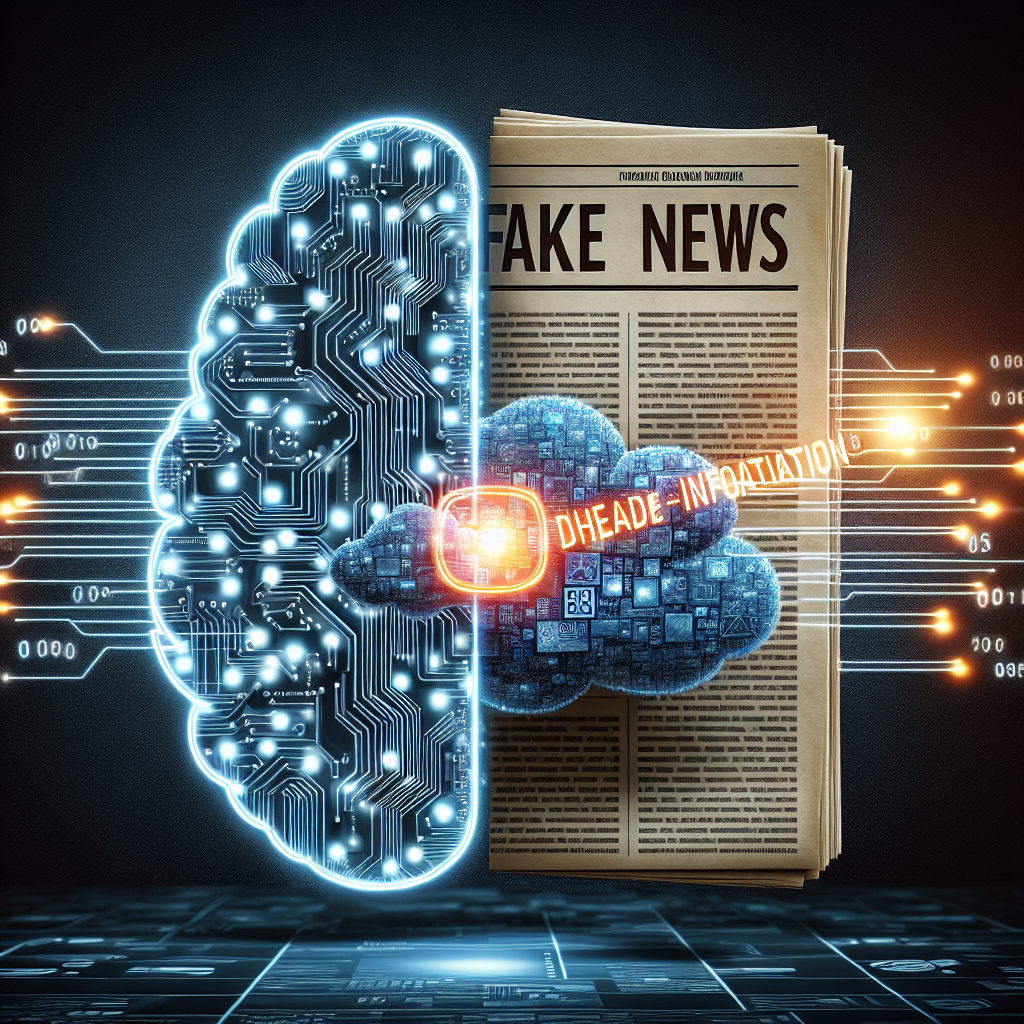In today’s digital age, the spread of fake news and misinformation has become a widespread problem. With the rise of social media platforms and the ease of sharing information online, it has become increasingly difficult to distinguish between what is true and what is false. This has serious implications for society, as misinformation can lead to a misinformed public, political polarization, and even threats to democracy.
Fortunately, artificial intelligence (AI) technology has emerged as a powerful tool in the fight against fake news and misinformation. AI can be used to detect and combat fake news by analyzing vast amounts of data, identifying patterns and trends, and flagging potentially misleading information. By leveraging AI technology, organizations and individuals can better navigate the digital landscape and make informed decisions based on accurate information.
How AI is used to combat fake news and misinformation
AI technology can be used in a variety of ways to combat fake news and misinformation. One common approach is through the use of machine learning algorithms, which can analyze large datasets of news articles, social media posts, and other online content to identify patterns and trends associated with fake news. These algorithms can be trained to recognize linguistic cues, such as the use of inflammatory language or the absence of credible sources, that are commonly associated with fake news.
Another way AI can combat fake news is through natural language processing (NLP) techniques, which can analyze the structure and meaning of text to determine whether it is likely to be accurate or misleading. NLP algorithms can be used to detect inconsistencies in a news article, identify biased language, and flag potentially misleading information.
AI-powered fact-checking tools are also being developed to help users verify the accuracy of information online. These tools use AI algorithms to search for reliable sources, cross-reference information, and evaluate the credibility of news articles. By providing users with real-time fact-checking capabilities, these tools can help stem the spread of misinformation online.
In addition to these techniques, AI can also be used to track the spread of fake news and misinformation online. By analyzing social media data, AI algorithms can identify how information is being shared, who is sharing it, and how it is influencing public opinion. This information can be used to better understand the dynamics of fake news dissemination and develop strategies to counteract its impact.
Challenges and limitations of using AI to combat fake news
While AI technology holds great promise in the fight against fake news and misinformation, there are also challenges and limitations that must be addressed. One of the main challenges is the sheer volume of online content that must be analyzed. With millions of news articles, social media posts, and other forms of online content being generated every day, it can be difficult for AI algorithms to keep up with the pace of information dissemination.
Another challenge is the inherently subjective nature of fake news and misinformation. What one person considers to be fake news may be viewed as legitimate by another. This subjectivity makes it difficult for AI algorithms to accurately distinguish between accurate and misleading information, as there is often no clear-cut definition of what constitutes fake news.
Furthermore, AI algorithms can also be susceptible to bias, as they are trained on datasets that may contain inherent biases. If these biases are not properly accounted for, AI algorithms may inadvertently perpetuate misinformation rather than combat it.
Lastly, there is also the issue of user trust and acceptance. While AI-powered fact-checking tools and other technologies can help combat fake news, users must be willing to use these tools and trust their findings. Without user buy-in, AI technology may not be as effective in combating misinformation as intended.
Frequently asked questions about using AI to combat fake news
Q: Can AI completely eliminate fake news and misinformation?
A: While AI technology can be a powerful tool in the fight against fake news, it is unlikely to completely eliminate the problem. Fake news is a complex and multifaceted issue that requires a multi-pronged approach, including media literacy education, fact-checking initiatives, and regulatory measures.
Q: How can I determine if a news article is fake or misleading?
A: There are several signs to look out for when determining if a news article is fake or misleading. These include checking the credibility of the source, cross-referencing information with other sources, and looking for inconsistencies or biased language in the article.
Q: Are AI-powered fact-checking tools reliable?
A: AI-powered fact-checking tools can be reliable, but they are not infallible. Users should still exercise critical thinking and verify information from multiple sources before accepting it as true.
Q: How can I help combat fake news and misinformation?
A: There are several ways individuals can help combat fake news and misinformation. These include fact-checking information before sharing it, supporting reputable news sources, and advocating for media literacy education in schools and communities.
In conclusion, AI technology has the potential to be a powerful ally in the fight against fake news and misinformation. By leveraging AI algorithms, machine learning, and natural language processing techniques, organizations and individuals can better navigate the digital landscape and make informed decisions based on accurate information. However, there are challenges and limitations that must be addressed in order to maximize the effectiveness of AI in combating fake news. By working together and adopting a multi-faceted approach, we can help stem the spread of misinformation and promote a more informed and educated society.

